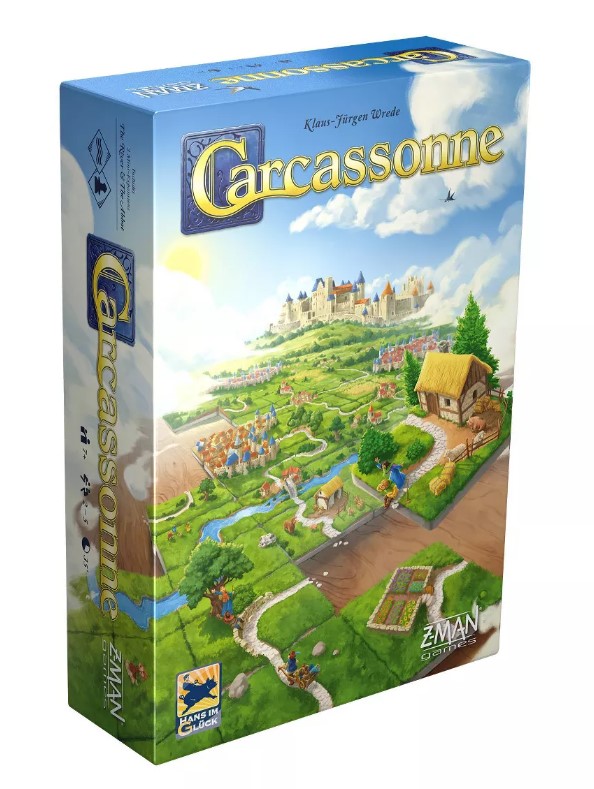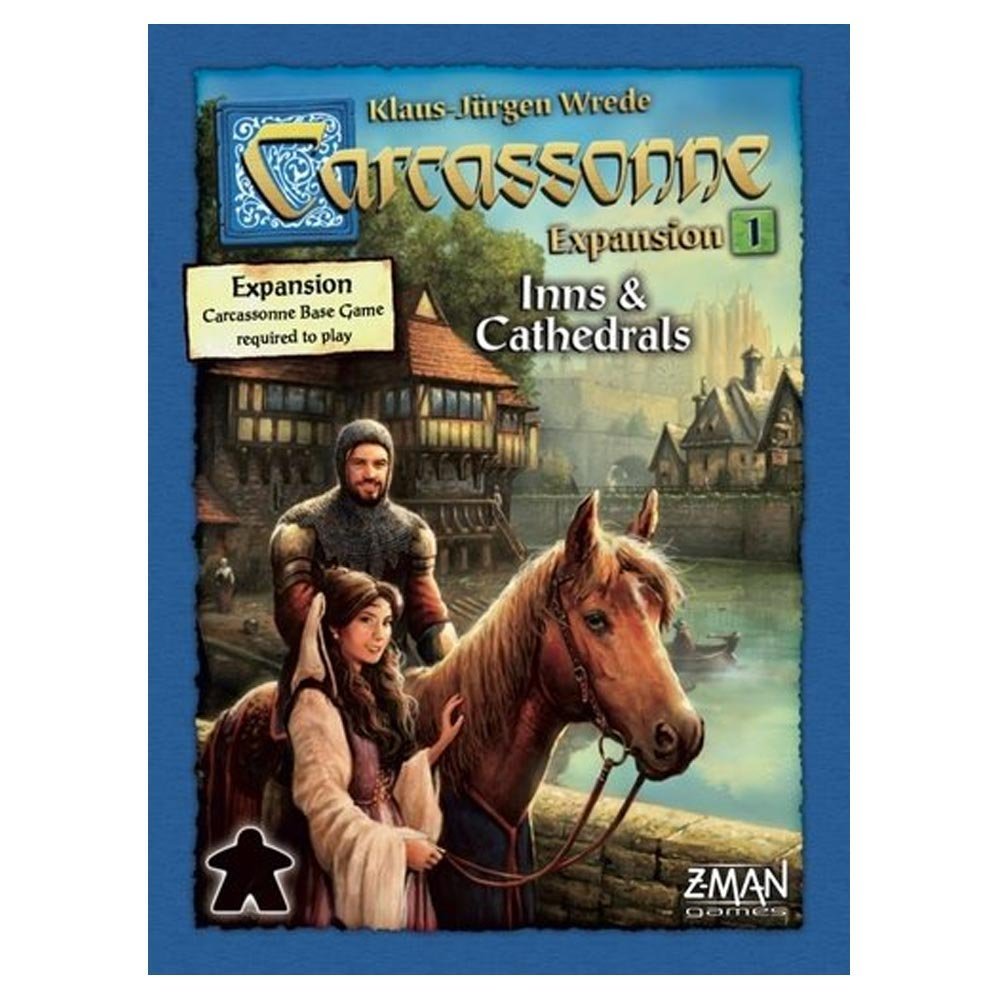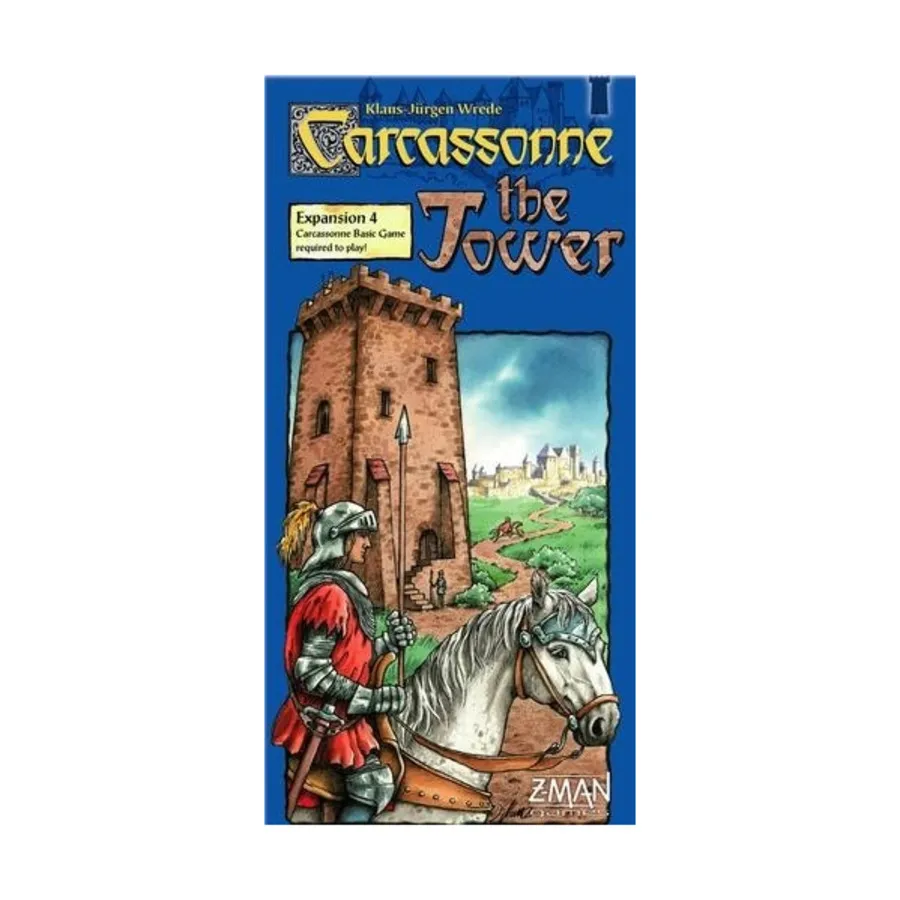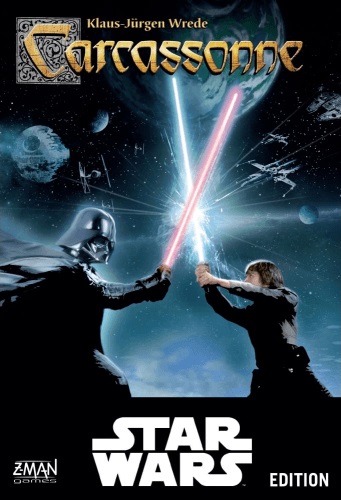Fields, cathedrals, cities and roads. Four simple structures scattered across a tile swath spreading over your table, points raining down with every placement. Carcassonne (Klaus-Jürgen Wrede), nearing its 25th anniversary, needs little introduction save to say that, for all its pleasant feel, this euro is as knives-out as it gets.
How to Plant a Field, Pave a Road, and Build a City
Turn by turn, the core Carcassonne is simple. Draw a tile and place it, then decide whether you’d like to drop one of your meeples, or workers, on the tile for a chance at points. Two decisions per turn, but meaty ones, a matrix that expands when you look at how those tiles score, and how that interacts with your limited worker supply.
Tiles in Carcassonne have four sides and might combine different scoring elements across all four. Two sides might be shaded for a city, while the other pair offer a curling road. To place this tile, you’ll have to match at least one side with a similar scoring type (a road to a road, say, or a city to a city). That match  expands the point potential. A city scores two points per tile it covers, while a road nets you one point for the same. Cloisters give you a point for every surrounding tile, while fields give points for every tile not split off by a road or city (a simpler concept to grasp when those tiles are in front of you).
expands the point potential. A city scores two points per tile it covers, while a road nets you one point for the same. Cloisters give you a point for every surrounding tile, while fields give points for every tile not split off by a road or city (a simpler concept to grasp when those tiles are in front of you).
What’s key is that this scoring doesn’t happen until the piece is complete (barring the game’s end – if the last tile is drawn, most elements score at reduced rates). They also only score for you if your worker happens to be on that road, in that city, dominating that cloister. The wrinkle? Your worker doesn’t return to your fold until that element scores (or never in the case of fields, which can cover vast sections of the growing map). When you draw a tile, you’ll have to decide whether to expand that city you’ve claimed, giving you more points, or close it off to get the worker back to use later. Or maybe you’ll cut off your opponent’s city, limiting their scoring opportunity while opening up a new road for yourself.
Get too greedy, though, and you might wind up without workers to take advantage of a sweet scoring situation, your confused servants dithering in half-built cities or patrolling dead end streets in search of meaning.
Carcassonne concludes when the last tile in the prodigious stack is drawn, meaning you’ll have plenty of hints the end is nigh. Doesn’t mean you’ll be able to do anything about it, though. Wincing as a cloister goes incomplete or that majestic city scores at half its potential is a common feeling, as is the desire to stack those tiles back up and run it again.
A combination of skill and luck packaged in a small box, perfect for travel, the pub, or a summer night on the porch, Carcassonne is a staple for any collection. While you can play with up to five, I prefer it one on one, where the opportunity to counter, trash talk, and run this half hour game back to back is at its best.
A Carcassonne Expansion Rundown
Of course, a game as perennially popular as Carcassonne invites expansion, with many opportunities available for those who’d like to add depth to their tile-laying duels. While these aren’t necessary, like expansions for Settlers of Catan, they can breathe new life into a favorite game if your plays are feeling a bit stale.
- Inns and Cathedrals – Adding city & road-buffing pieces, Inns and Cathedrals is a light-weight addition that also includes a large meeple that counts as two, perfect when you see a field or city you really need. If you’re planning on large Carcassonne play groups, the sixth-player pieces here can help too.
- Traders and Builders – Place more tiles in a single turn with builder meeples, trade some goods, or raise a nice pig for points. The real highlight here
 though is a nice linen bag to make your Carcassonne collection portable.
though is a nice linen bag to make your Carcassonne collection portable. - The Princess & the Dragon – For players who want a more aggressive bent to their game, this expansion lets you demolish enemies with the titular dragon, or protect your poor meeples with some magical fairy power. The dragon and fairy move all about the map as you place tiles, causing general chaos, hilarity, and adding opportunity for a bit of take-that goodness.
- The Tower – Nothing like a good prison to spice up your game. The Tower gives you the chance to capture your opponent’s followers, which they can then rescue by capturing one of yours in a classic prisoner swap, or pay for their release with precious points.
And there are plenty more, which you can find at Noble Knight. There’s also Big Box editions to keep all this simple, like this one with a whopping 11 expansions for those of you who can’t get enough Carcassonne.
The point, of course, is that all these expansions can be dropped in and out as you please, and every one is a minor addition. We’re not talking layers of rules grit here, but some easy flair for some familiar fun.
Kid Loved, Parent Approved
If there’s a quality to classic, Spiel Des Jahres-winning euros that I most enjoy, it’s that they’re often easy to slim down for younger players. Carcassonne is no different, and My First Carcassonne (Marco Teubner) offers a convenient, cost-effective way to get your younger players to the table, no reading required.
 Rather than giving a blank tabletop to fill with tiles, My First Carcassonne encourages filling in an illustration, helping guide tile placement while removing the scoring ambiguities of its bigger brother. Instead, the ‘winner’ here is whomever manages to fill in their landscape first. The art is more dynamic here too, with more spirit and character to keep kiddos engaged.
Rather than giving a blank tabletop to fill with tiles, My First Carcassonne encourages filling in an illustration, helping guide tile placement while removing the scoring ambiguities of its bigger brother. Instead, the ‘winner’ here is whomever manages to fill in their landscape first. The art is more dynamic here too, with more spirit and character to keep kiddos engaged.
Honestly, I like it more than the core game’s rather standard bland euro fare. My advice to that end? Look for the Winter Edition. The snowy fields, while not matching up with expansions, are so much prettier to look at. Or maybe that’s just my Wisconsin background showing through.
A Lofty Legacy
In a hobby that’s moving ever faster, taking a minute to look at games like Carcassonne is worth doing. Gems like this one play just as well now as they did decades ago when first printed, because the mesh between rules, mechanics, and fun is perfect. Sure, it might not have a thousand minis, a sprawling map (though, with all those expansions, Carcassonne sure isn’t small), or a yearslong campaign, but Carcassonne and its contemporaries from the 90s and 2000s (and earlier) shouldn’t be ignored.
Next time you’re on the hunt for a game to add to your collection, scroll back through the years. You might find exactly what you’re looking for already available, and probably cheaper too.
available, and probably cheaper too.
Carcassonne continues to stand time’s test through its simple, juicy gameplay. When played at its dueling best, there’s almost zero downtime, and every tile is packed with possibilities. Slim rules make for an easy teach, and almost endless expansions mean you can grow with the game as much as you wish.
I’d call it a requirement for every collection, unless you have an aversion to squares, tile-laying, or European countryside theming. Which is a fair point: where is Carcassonne in Space?
Oh, they made a Star Wars edition? Well then.
